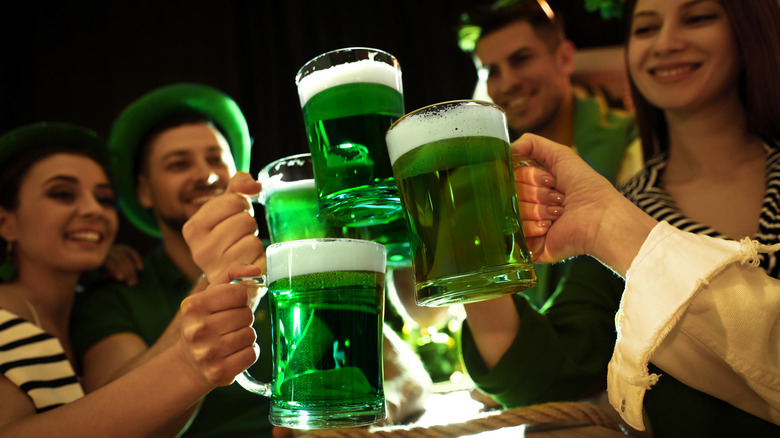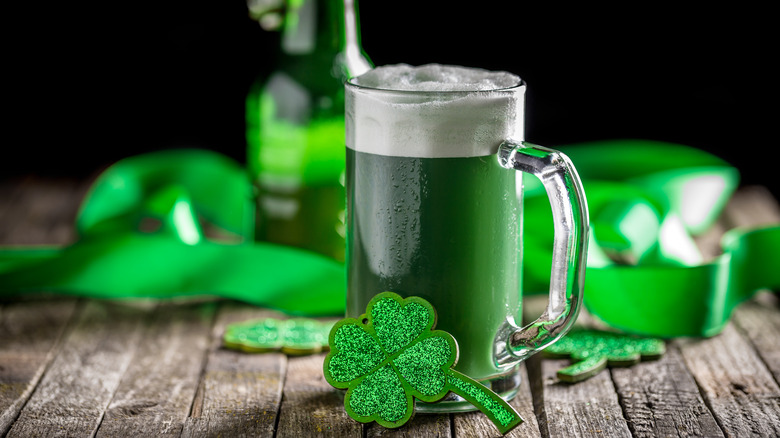What Is St. Patrick's Day's Green Beer Actually Made Of?
Come March 17, those who are not wearing green are at risk of getting pinched. This particular day marks St. Patrick's Day, a celebration of Irish heritage. Along with eating Irish dishes like corned beef and Irish soda bread, it's also become a tradition to have a drink or two to celebrate the day. In the United States, St. Patrick's Day is one of the biggest drinking holidays, alongside Christmas, New Year's Eve, and July 4th. One of the most iconic traditions is when the Chicago River is dyed bright green to celebrate the holiday. And that's not the only liquid that changes color that day. Dip into any restaurant or pub on St. Patrick's Day and you'll likely see an array of Irish drinks — including distinctly green beverages.
No Irish celebration is complete with a pint of Guinness beer, which is one of the most consumed beers on St Patrick's Day. A mere 13 million pints are enjoyed on the celebratory day alone. Irish whiskeys like Jameson and Bailey's Irish cream liqueur are popular choices to indulge in at bars and at home for the holiday. However, one tried and true sign of the holiday is an abundance of green-colored beers. You'd be hard-pressed to find a naturally occurring green beer, but how your pint becomes such a hue is surprisingly simple.
It's not actually green
As it turns out, the green-colored beer so often seen at pubs and St. Paddy's parties is made by adding a bit of blue food coloring to the beer. It makes sense, considering that blue and yellow mixed make green. A light beer works best to achieve the best and brightest shade of green. Only a few drops of food coloring will do the trick, and don't worry, it won't give the beer any strange new flavors. Aside from green beer being a fun and colorful way to celebrate the holiday, it's part of a long American tradition. It was first seen in the 1900s, when a coroner's physician decided to add wash blue to his light beer to turn it green. Wash blue was actually added to laundry to make clothes whiter and probably wasn't the best for human consumption.
In addition to blue food dye, some brewers add blue spirulina, a type of vividly-colored algae that's packed with plant-based protein and antioxidants (via Healthline). If green beer isn't your cup of tea, there's a slew of green cocktails and mocktails you can make for St. Patrick's Day. For a treat that doubles as both a drink and dessert, try a grasshopper. It's made with creme de menthe, creme de cacao, and Bailey's Irish cream, so you'll be getting a bright green drink with some Irish flair.

